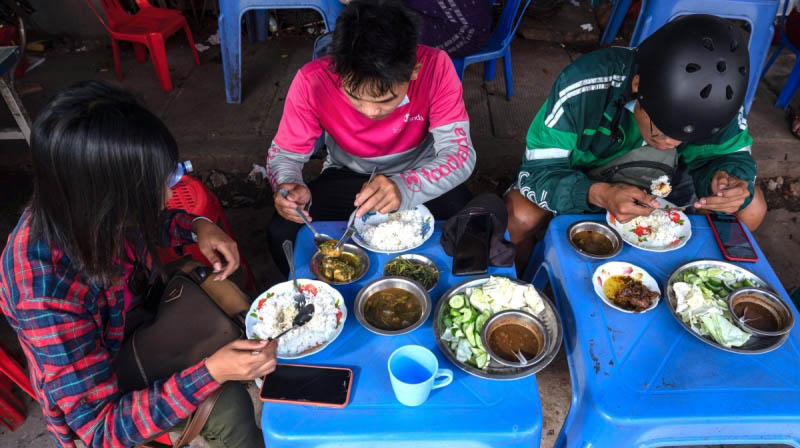A Review of How Food Delivery App Drivers Eat On A Daily Basis
 image credits: Vice News
image credits: Vice News
In this age of food delivery, where Covid-19 still plays a huge part in people’s lives, food delivery app companies have become household names, such as Deliveroo, Grab and Food Panda. We owe a lot of our ability to eat and support F&B establishments thanks to these companies, as well as one of the biggest components of the companies’ success: the delivery food drivers.
Thus, it becomes a huge disconnect when we read this story this week from Vice, which showcase a photo essay of how these delivery food drivers from all over Southeast Asia eat in comparison to the food they deliver.
“VICE World News asked drivers in key Southeast Asian cities this month to show us the food that got them through the day, and to reflect on a year in the pandemic trenches of the food delivery world,” writes Anthony Esguerra, and the photo essay showcases the huge disparity of the food that these drivers eat.
What this essay brings up is the issues of class disparity: while these food drivers are an integral part of our way of eating, drinking, and staying sane, drivers like them across Southeast Asia are simply not able to earn enough to do the same, nor do they have the time to do so in order to meet the quotas.
Here is an excerpt from the photo essay that we found as an example to our point, which focuses on the driver Francis Bayani of the Philippines.
“Francis Bayani, 28, worked in the kitchen crew at McDonald’s before he started delivering food for Grab two years ago. He said the salary at the fast food chain was just enough for college students, but not a family man.
His favorite lunch is usually tocino (honey-cured meat) sold at a hangout spot where they eat and recharge their phones or rest during downtime. But what was available the day he was inteviewed was beef mami pares (hot beef noodles) that cost about 50 cents.
His lunch and what he delivers are miles apart in price.
“Sometimes I wonder how the food I deliver tastes,” he said.
“We go to all of these expensive restaurants to pick up food, but I haven’t eaten them myself.”
But one day, a delivery was cancelled when he was already on the way to bring the food. He suspected it was a scam or what they call “fake booking.” With permission from the Grab Philippines office, “I ate it and I actually enjoyed it. It was delicious.”
Francis dreams of taking his family to eat out at a buffet Korean BBQ restaurant, which has become a trend in the Philippines.”
We urge you to take a look at this
essay from Vice, and ponder about the issues of class, the gig economy, how capitalism brings us together and yet divides us, as well as how food plays a part in our lives. If there is any way you can help support the drivers of the food delivery apps in this day, do so. It’s our only way to show our appreciation of them, and how we can support the F&B scene better in 2021.
 image credits: Vice News
image credits: Vice News